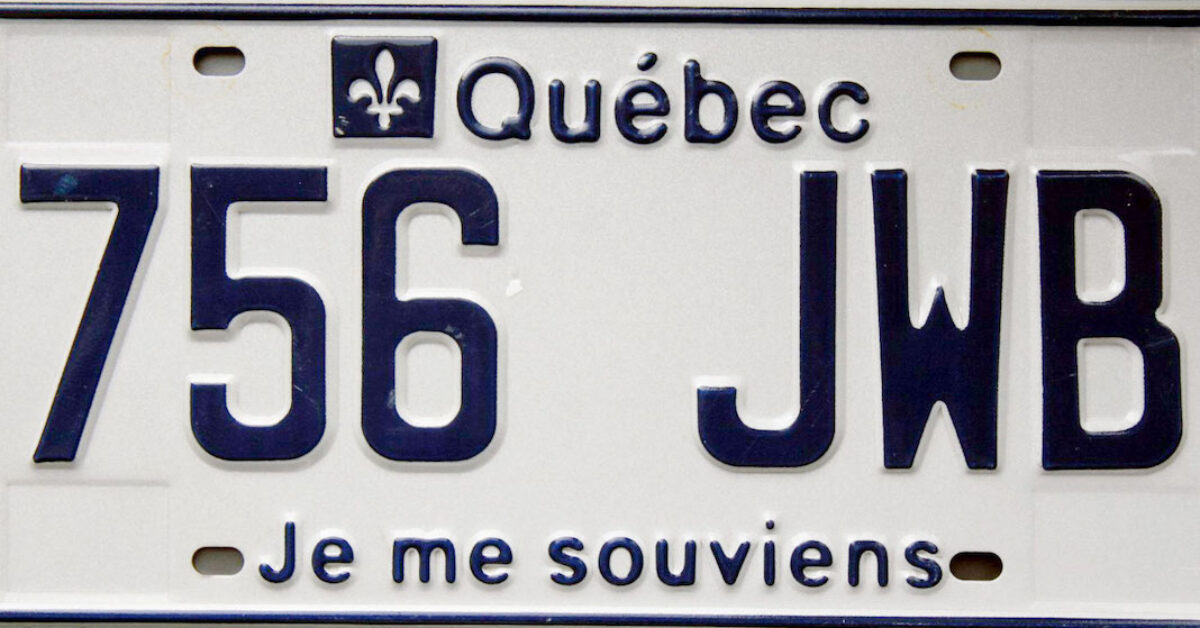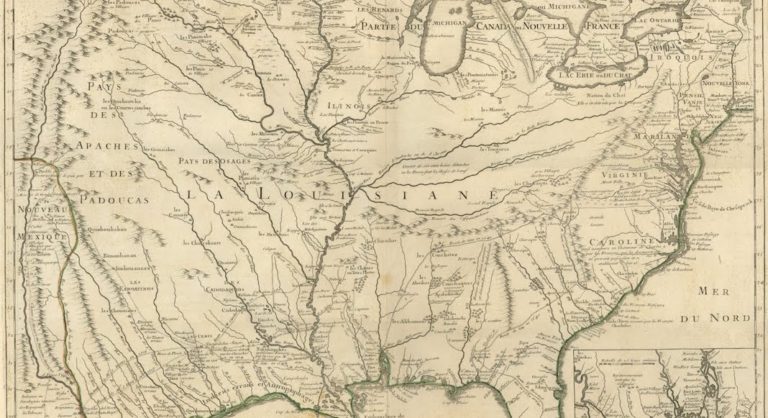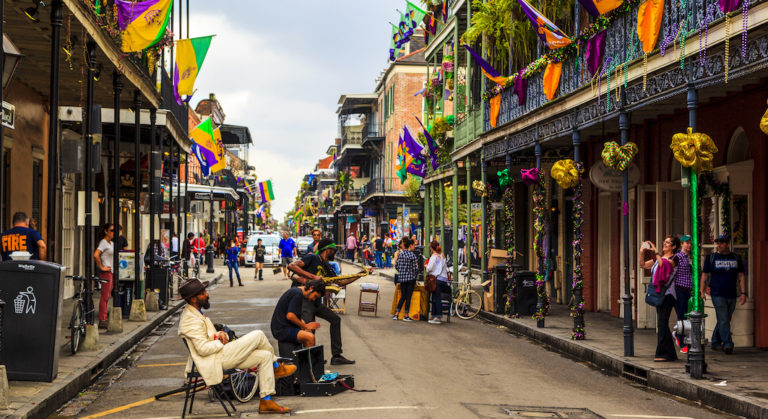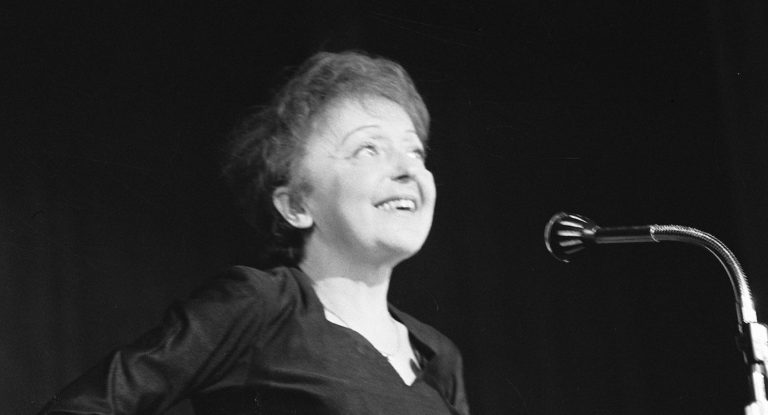License plates hold a certain intrigue to many Americans, no doubt because of the license plate game. Rolling down Route 1, kids are told to keep their eyes peeled for Alaska’s “The Last Frontier,” Hawaii’s “Aloha State,” and, of course, the “Je me souviens” of Québec. This white license plate accented with the blue fleur-de-lys reminds us all that “I remember,” or really, the Québeçois remember. But what are they supposed to remember?
Origins of Quebec’s Motto
The origin story begins in 1883, when the architect Eugène-Etienne Taché was designing his plans for the Palais législatif du Québec (the modern day Assemblée Nationale). At the main entrance of the Second Empire Style parliament building, he had “Je me souviens” carved into the stone below the Québec coat of arms, which he also designed. Excited by the phrase, city authorities quickly adopted it, and it became a part of the official Québec coat of arms in 1939. The Lévesque administration went a different route in 1978, replacing the “Je me souviens” motto with a second motto, “La Belle Province,” meaning “The Beautiful Province,” though it didn’t quite stick in the same way. That motto is used mostly as a nickname and for tourism ads.
The Motto’s Meaning
As for determining what we’re supposed to remember, the problem is the that no one made the effort to give it an official, specific meaning.
Interpretations of the motto go every which way. Certain Anglophone journalists saw the motto as an insult to the British: “Je me souviens,” referring to when the British conquered Canada and declared it New France. Others interpret the motto as a eulogy to the British administration.
The diverging opinions on interpretations by French Canadians further split when Hélène Paquet, a granddaughter of Eugène-Etienne Taché, spoke out about the meaning in 1978. In an op-ed in The Montreal Star, she wrote that “Je me souviens” was not the complete phrase. According to her, what her grandfather intended to write was “Je me souviens / que né sous le lys / je croîs sous la rose” (“I remember / that born under the lily / I grow under the rose”). This references the emblematic flowers of France and England: the lily refers to the French fleur-de-lys, and the rose refers to the British Tudor rose. As uniting as this explanation might be, historian Gaston Deschênes has said that it’s false. According to him, Taché did write all of those words, but “Je me souviens” and “Né sous le lys, je grandis sous les roses” were written during two different moments and were never meant to be put together.
Going back to the time in the past at which the motto was carved is where the true meaning reveals itself. Though Taché never offered any extensive explanation for the motto, he did write a note to the deputy commissioner of Public Works in 1883 explaining what he hoped to do with his architectural designs. In that letter, he wrote that he had an idea to evoke “l’ensemble des souvenirs” (“the entirety of memories”) in the façade of the parliament building. Essentially, Taché wanted to make a monument to the memory of the heroes of Quebec’s history. The military generals, explorers, indigenous peoples, government officials of both the French and English regimes, and other historical figures, as well as a few empty spaces where the future generations could write their own Quebec history.
So next time you’re stuck in traffic on the GW Bridge and see one of those white and blue plates with the fleur-de-lys telling you to remember something, remember Jacques Cartier, Champlain, Maisonneuve, and all the other essential figures of Québecois history. Think of them and you’ll probably be respecting the intentions of Taché. Although, if you prefer to align your interpretation with the Anglophone journalists, seeing the motto as a jab at Britain, then you’re in good company with French expats in Canada and many other Québecois!
Frequently Asked Questions – Je Me Souviens
Why does Quebec say “Je me souviens”?
“Je me souviens” was the motto carved below the Québec coat of arms in 1883, by the architect Eugène Etienne Taché.
What is the meaning of “Je me souviens”?
“Je me souviens” means, “I remember” in French.
Where is the phrase “Je me souviens” most often written?
“Je me souviens” appears often on Quebec license plates.






